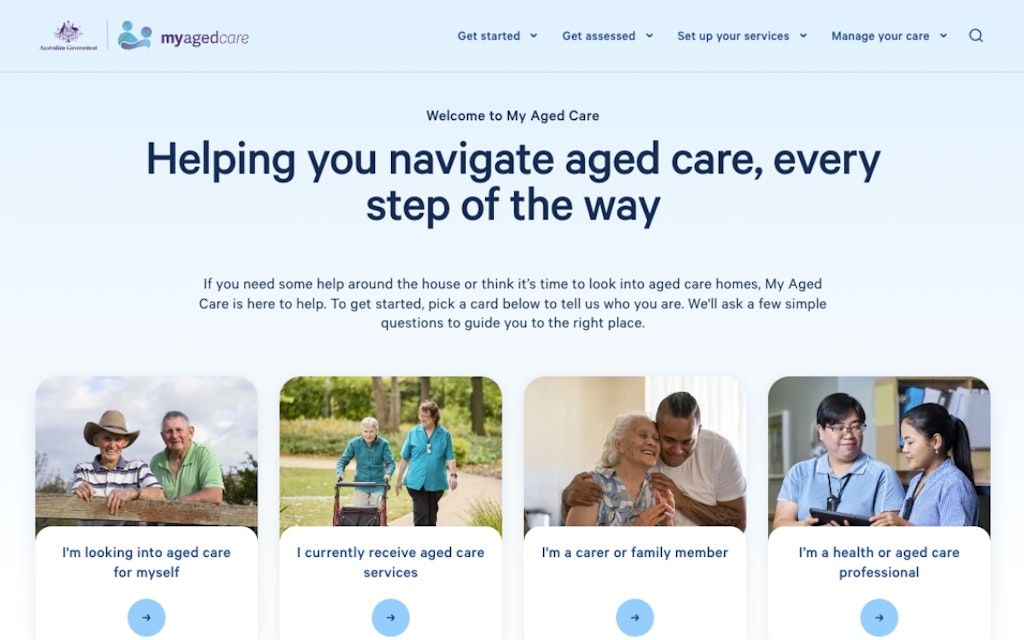New Act, new My Aged Care: same systemic failures
Published on 6 November 2025

improved navigation, smarter tools, and personalised guidance.
On 1 November 2025, the Federal Government unveiled its latest version of the My Aged Care website, designed to coincide with the commencement of the Aged Care Act 2024.
The Department of Health and Aged Care declared that the platform was “designed with older people at the centre,” offering improved navigation, smarter tools, and personalised guidance.
But for sector leaders and providers who have watched this movie before, the question is simple: Has anything really changed?
Or is this another expensive digital facelift for a system that remains fundamentally flawed?
Twelve years on, the system still fails the user
My Aged Care was introduced in 2013 with a $198 million investment and the promise of being a single, accessible entry point into the aged care system. The reality was very different.
From the beginning, users, both consumers and providers, described it as confusing, slow, and overly bureaucratic.
Subsequent rebuilds followed. In 2018–19, another $61.7 million was spent on a full redesign. Yet key pain points persisted: outdated provider information, inconsistent accessibility, and a confusing user experience for older Australians and their families.
By 2025, the Department had extended its contract with the platform’s digital agency 16 times, reaching a total value of $30.6 million. That equates to roughly $30,000 per day to “operate and enhance” a website that still fails to meet its purpose.
According to the Department’s own reporting, just 56% of users were satisfied with My Aged Care in 2023–24. That figure should alarm any leader responsible for a national digital gateway to care.
A cycle of cosmetic change without structural reform
Every few years, a refreshed interface is released, complete with new branding and promises of “enhanced user experience.” Yet the improvements remain largely surface-level.
In 2019, the update promised faster search and better filters. In 2025, the same language appears in the latest press release.
The result: déjà vu dressed in new colours.
This pattern reflects a deeper issue, the government’s continued focus on appearance over usability.
Older Australians, many of whom have limited digital literacy or mobility, continue to struggle with basic navigation. The need for the Care Finder program, designed solely to help people navigate My Aged Care, is evidence of this failure in system design.
The gap between intention and impact
Despite its repeated positioning as “person-centred,” My Aged Care continues to alienate the very people it is meant to serve. The site’s structure prioritises government process over consumer experience, creating friction at every step of what should be a supportive journey.
The Royal Commission into Aged Care Quality and Safety called this out clearly in its 2021 Final Report, describing the platform as “not user-friendly,” lacking clarity, and difficult to navigate for older people, carers, and providers alike.
The Inspector-General of Aged Care, Ian Yates, has also been candid in his assessments, noting that the system remains “not fit for purpose.”
Four years later, those same criticisms still apply. The November 2025 update brings new labels and a new layout, but the fundamental experience remains the same.
Leadership accountability: digital transformation must deliver
For executive leaders and decision-makers across aged care, this moment demands more than commentary. It calls for accountability.
Over a quarter of a billion dollars has been invested in a platform that still fails its most important test: enabling access to care.
In an era defined by data, design, and consumer expectation, a system that confuses the vulnerable is a system that has failed its mandate.
If government intends to lead a modern, integrated care ecosystem, digital transformation must go beyond compliance and procurement cycles. It must deliver measurable outcomes such as accessibility, transparency, and trust.
Until then, My Aged Care remains a case study in missed opportunity: a costly lesson in how not to build for the people you claim to serve.